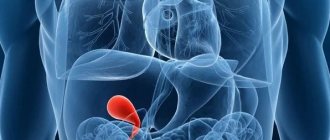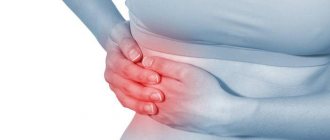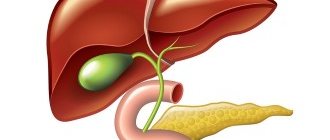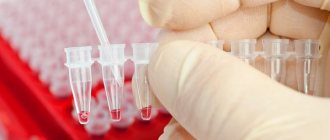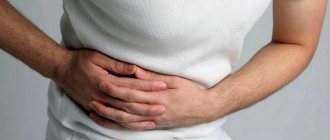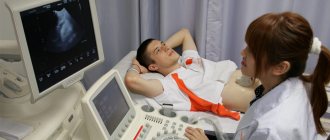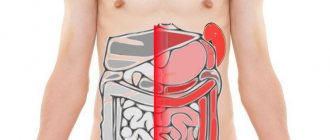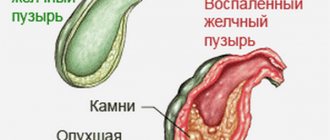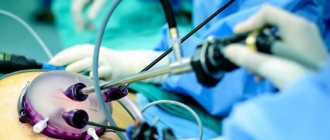What is the gallbladder
The bladder is a kind of reservoir for the accumulation of bile, which then enters the duodenum through the bile ducts. Bile is important for digestion because it dissolves fats. In order for bile to have a good outflow, the gall bladder must contract correctly.
The wall consists of:
- Mucous. It is covered with epithelium, which provides metabolism and blood supply.
- Muscles that cause contractions for the flow of bile.
- The serous membrane that protects the gall bladder.
Hardening of this wall can cause serious health problems.
Pathologies
There are many diseases and formations that can be seen in the gallbladder using ultrasound. Each of them has symptoms and developmental characteristics. Let's take a closer look at the most common pathologies.
Cholesterosis
This disease is characterized by the process of cholesterol deposition in the organ. These pathological actions lead to inflammation. Factors that can influence the onset of cholesterol formation are diseases: diabetes mellitus, obesity, thyroid disease and others.
Using ultrasound, it is possible to characterize the anterolateral wall. In an ultrasound image, this disease is visible as an uneven thickening of the walls of the bladder. In the diffuse form, individual areas similar to a dotted line are observed.
Dyskinesia
This disease means that there is a disturbance in the process of bile outflow due to incorrect contractions of the gallbladder. It often occurs due to a hormonal, hypotonic or hyperkinetic disorder. To improve the flow of bile, you should adjust your diet and avoid stress.
It is with the help of ultrasound that this disease can be detected. Dyskinesia is visible in the image as uneven outlines of the organ, the presence of constrictions and kinks that have formed. The walls are thickened and are in strong tone. Also, during this procedure, it is possible to track the contractility of the bladder walls, and their incorrectness is the main sign of dyskinesia.
Cancer is one of the most serious and dangerous pathologies.
There are many causes of the disease.
These include genetic predispositions, smoking and addiction to alcohol and heavy food.
How inflammation manifests itself
Due to poor nutrition and functional disorders of biliary motility, inflammation occurs, called cholecystitis. Because of this, gallstones gradually increase in size, which further affects the mucous membrane.
Inflammation causes swelling. In order to increase blood flow and ensure an influx of immune cells, capillaries dilate. Leukocytes will flow from the blood into the tissues to destroy the infection, which is necessarily observed during inflammation.
Due to swelling, the walls of the gallbladder become thicker and denser. Chronic inflammation causes the growth of connective tissue resembling a scar. This is what causes the gallbladder to thicken.
Important! A dense bladder stops contracting properly, and problems with it become more and more frequent.
Complications
The following complications may occur.
- Organ rupture due to contraction by adhesions.
- Malignant tumors are degeneration of benign tumors or constant inflammation.
- Reactive inflammations carried by blood - immune diseases of bone tissue, meningitis, inflammation of the heart muscle; severe leukocytosis - blood sepsis.
- Due to stagnation of bile - suppuration in the gastrointestinal tract, dysbiosis, susceptibility to infectious diseases.
- Uneven thickening-thinning – peritonitis, perforation, rupture.
- High probability of cirrhosis and hepatitis - rapid development.
What does an ultrasound of the bile duct show?
A gastroenterologist treats the disease. Ultrasound is one of the best methods for studying pathologies of the biliary system. With its help, doctors determine:
- gall size and wall thickness;
- presence of cholelithiasis;
- correct bile secretion;
- duct diameter;
- condition of the pancreas and liver.
Thickening of the walls of the gallbladder up to 4 mm in adults and up to 2.5 mm in children is considered normal. In a healthy state, they have a uniform structure and smooth contours. Inflammation dramatically changes this picture. When a patient develops cholecystitis, the walls of the bladder thicken unevenly. The maximum rate is observed in the area of the calculus.
The heterogeneous structure of the gallbladder is manifested on ultrasound by increased signal and hyperechogenicity. In the photo, the affected areas are bright. This is typical for chronic inflammation. In some situations, the thickening resembles layering.
Another typical manifestation of thickening is the formation of “flakes” of thick bile. This condition is caused by excessive consumption of fatty foods, which leads to an increase in the concentration of cholesterol and lecithin. If a person does not adjust his diet, stones will begin to form.
Diagnostics
The main diagnostic method is a simple ultrasound of the gallbladder. Modern equipment has an echo scanning function - determining the density of soft tissues - a worthy replacement for radiographic methods - there is no need to expose the abdominal organs to harmful radiation, which, although to a lesser extent, is also affected by MSCT.
The basis for referral to an ultrasound are the results of a general and biochemical blood test.
- General analysis: ESR above 12; leukocytes above 10.5 or below 3.5.
- Biochemical – high ALT, AST – cholestatic phenomena.
The results of these analyzes are considered as a whole.
Ultrasound shows the diameter of the wall - 5 mm and higher with thickening; inflammation – blurred contours; tumors – high density; fat deposits – low density.
Reasons for the development of thickening
The occurrence of pathology is influenced by the state of the body and the functioning of its organs and systems.
Most often, thickening of the walls of the gallbladder is a consequence of:
- Housing and communal services Because of the stones, the tissues begin to become inflamed and swollen. This is common in diabetics, obese people and Crohn's syndrome.
- Acute cholecystitis. Inflammation causes swelling, causing tissue thickening. This is caused by infectious diseases, parasites or viruses.
- Chronic cholecystitis. Due to the duration of the inflammatory process, scars remain on the tissue after healing. A large number of them causes compaction.
- Cholesterosis. Impaired lipid metabolism causes the accumulation of LDL in the bladder. As a result, it stops contracting correctly, becomes inflamed and thickens.
- Improper functioning of the heart. Due to heart problems, not only limbs, but also organs can swell.
- Neoplasms. Polyps often seal the walls of the bladder. Oncology is rarely diagnosed, but there is always such a risk.
- Hereditary factors and deformations. The bladder may become denser due to congenital or acquired kinks.
- Dropsy. A large amount of serous matter causes many problems, for example:
- renal and heart failure;
- chronic pancreatitis;
- hepatic cirrhosis;
- oncological formations.
Thickening may occur due to gallstones
In adults
Thickening of the bladder in adult patients occurs due to excessive consumption of junk food and bad habits. Alcohol, fried and fatty foods, diets, snacking on flour products on the go - all this negatively affects health.
In children
Children are less susceptible to developing this pathology. At a young age, it occurs due to impaired functionality of the nervous system.
Sometimes thickening occurs due to cholecystitis. It is provoked by parasites that have entered the bile ducts from the intestines. Helminths clog the pathways and enter the vessels, which leads to inflammation and intoxication.
Important! Over the years, the sympathetic and parasympathetic systems change tone. This can disrupt the functioning of the digestive system and gall bladder.
At-risk groups
Pathology in adults is more common under the following conditions.
| Athletes | Anabolic steroids, unusual simultaneous physical activity; Fat deposits on the gallbladder; microcracks in the muscle layer extending to the mucosa. |
| Alcohol abuse | Fat deposits; the root cause is liver disease; damage to the mucous membrane due to increased acidity. |
| Activities involving excessive physical exertion | Abnormal healing of microcracks turning into hard growths. |
| Pathologies associated with increased appetite | Longitudinal fatty growths or compression of the gallbladder - stretched form - rupture. |
| Frequent hypothermia | Local swelling. |
In children:
- Congenital anomalies of shape.
- Switching from breastfeeding to mixtures is an inflammation.
- An unbalanced diet - fatty and high-calorie foods, starting from 3-5 years.
- Running until there is colic in the right hypochondrium; nervousness; drinks with bitterness - a large fold surrounding the bubble.
Symptoms of wall thickening
Signs of the development of the disease most often appear at a late stage. This is manifested by the following symptoms:
- nagging pain from the right side of the abdomen, which is felt in the lower back and shoulder blade;
- attacks of nausea;
- gagging;
- chills and fever;
- yellowing of the eyeballs and skin.
Chills Yellowing of the eyeball
In some cases, the intensity of symptoms increases if the disease worsens.
The list of additional signs is presented:
- belching, often with bile;
- bitterness in the mouth;
- constant heartburn;
- darkening of urine and feces.
Persistent heartburn
The progression of these conditions can cause various complications, for example:
- biliary dyskinesia - a violation of the contractile function of the bladder, which provokes an abnormal decrease in bile and digestive disorders;
- infectious infection - stagnation of bile creates ideal conditions for the proliferation of microbes that easily affect the intestines, pancreas and liver;
- liver failure.
If the disease is caused by oncology, the tumor can affect other organs.
The likelihood of developing complications is influenced by genetic predisposition and adherence to a correct lifestyle.
Why does the gastrointestinal tract thicken?
Since this condition is not normal, something must cause it to develop. So, why do the walls of the gallbladder thicken:
- acute and chronic cholecystitis;
- cholelithiasis;
- infectious diseases;
- inflammation of the bile ducts (cholangitis) and malformations;
- diseases of the pancreas and liver;
- cancer tumor.
Having undergone a comprehensive examination when thickening of the gallbladder walls appears and having discovered the causes, it will be possible to begin treatment. If therapy is not started in time, the disease will become chronic or complications will begin.
Treatment of the disease
The disease requires complex therapy, consisting of:
- medicines;
- special food;
- exercise therapy;
- folk recipes.
Let's look at the features of each method.
Medicines
Treatment involves prescribing:
- Antibiotics. They are selected individually for each patient and help eliminate inflammation of the bladder.
- “Cholenzima”, “Allochola” and “Nikodima” to normalize the amount of bile in the gallbladder and liver.
- “Papaverine”, “Atropine” and “Amizil” to relieve spasm and pain.
- Antibacterial agents to treat and prevent infection.
- Magnesium preparations for a positive effect on muscles.
- Herbal medicine to combat inflammation.
"Allohol"
"Papaverine"
Important! The dosage and duration of taking medications is determined only by a qualified specialist. Self-medication is strictly prohibited.
Therapeutic diet
When the increase in the thickness of the bladder walls exceeds the permissible millimeter, in addition to the use of medications, the patient urgently needs to adjust his diet. The patient's diet should be based on:
- weak herbal, berry and fruit tea;
- fermented milk drinks, cottage cheese;
- a small amount of butter and sour cream;
- 1 homemade egg per day;
- dietary varieties of meat and fish;
- stale bread;
- compotes and jelly;
- vegetable soups;
- cereals;
- light salads with vegetable oil;
- steam cutlets;
- pasta;
- cottage cheese casseroles;
- stewed vegetables.
The patient's diet should not contain:
- strong coffee and tea;
- alcoholic drinks;
- bakery products;
- fatty and fried meat;
- chocolate, ice cream;
- smoked meats, spices, pickles;
- mushroom dishes;
- rich broths;
- pancakes, pancakes and pies.
Compliance with dietary nutrition will have a positive effect on the patient’s well-being and will make it easier to endure the disease.
Exercise therapy and physiotherapy
When the disease goes into remission, the patient may be prescribed tubage. This procedure ensures better channel patency and bile drainage. The patient needs:
- drink choleretic liquid;
- lie on your right side;
- apply a heating pad.
The procedure lasts no more than an hour.
Exercise therapy is prescribed to strengthen the abdominal muscles and activate the outflow of bile. This effect is achieved by performing certain exercises daily.
Important! When performing exercise therapy, you cannot load the right side, as this will negatively affect bile outflow.
Wellness procedures and treatment in the sanatorium have a positive effect on the entire body as a whole.
If stones are found in the bladder, they are removed using:
- lithotripsy - crushing stones with ultrasound and laser;
- cholecystectomy - removal of the gallbladder.
As a rule, the first method is used more often. Otherwise, they resort to surgical intervention.
Alternative medicine
The use of folk recipes helps to enhance the effectiveness of the use of medications and exercise therapy:
- Dandelion salad. Soak 15 g of dried leaves in salted water for 15 minutes. Then chop and mix with chopped boiled egg. The dish can be used for medicinal and preventive purposes.
- A mixture of barberry, walnut and lemon balm. Soak 18 g of leaves in cold water for 30 minutes. Then boil the water, strain and cool. Take a tablespoon three times a day before meals.
- Celandine is good at eliminating polyps. Pour 25 g of dried plant with water and leave for 2 hours. Take 30 ml 20 minutes before meals.
- Sugar beets dissolve stones well. Peel it, cut it into cubes, add water and cook over medium heat until the liquid thickens. Pour the finished broth into a jar and place in a dark, cool place. Take 50 ml before each meal for eight weeks.
- Pour two teaspoons of dried sage into 0.5 liters of boiling water and leave for 30 minutes. Take 15 ml every three hours.
Despite the use of natural ingredients, traditional medicine can cause great harm to the body. To prevent this from happening, use its recipes only as prescribed by your doctor.
Proper preparation for an ultrasound
To obtain accurate results, the patient must be properly prepared before undergoing an ultrasound. Gas formation in the intestines can negatively affect the result of the study, therefore, four days before the procedure, it is necessary to exclude from the diet:
- vegetables containing fiber;
- peas, beans, corn, soybeans;
- bread and baked goods;
- dairy products;
- fatty dishes.
It is also recommended to take Espumisan, Festal, they reduce the content of intestinal gases. Ultrasound is performed in the morning on an empty stomach. It is forbidden to drink coffee, strong tea, or smoke before the procedure.
Sometimes it is necessary to test the bladder for its ability to contract. To do this, an initial study is carried out on an empty stomach, and a repeat study is carried out after taking choleretic drugs and fatty foods.
Disease prevention
You can prevent the development of gallstone problems if:
- Healthy food;
- drink alcohol in minimal quantities;
- avoid hypothermia;
- if your health worsens, seek qualified help;
- practice adequate physical activity;
- do not abuse medications;
- after treatment of helminthiasis, go on a cleansing diet;
- control salt intake;
- Do not go on weight loss diets unless they are designed specifically for you.
Timely diagnosis and treatment ensure the patient’s full recovery.
Decoding the results
It is important to consider that the normal size of the organ may vary slightly depending on age. They will differ in older people and children, and the average volume of the gallbladder in an adult is about 40-80 ml.
Normal for adults
A healthy adult patient must have certain organ parameters, which include width, diameter, wall thickness and length.
The following are considered normal indicators:
- volume about 70 ml;
- wall thickness no more than 0.4 ml;
- organ length, about 6-10 cm;
- the width should not exceed 5 cm;
- the diameter of paired ducts is normally about 0.3 cm;
- the diameter of the main duct cannot exceed 0.7 cm.
Interestingly, in women over 40 years of age, gallbladder lesions are much more common than in men. Moreover, naturally overweight blondes often suffer from such diseases. In men, such pathologies are observed much later, and only under conditions of alcohol abuse and poor nutrition.
Find out the norms of the gallbladder from the video:
https://youtu.be/yOLadO-jWxE
Norm for children
The normal size of the gallbladder in children varies depending on age. So, for newborns, the norm is considered to be a length of 3.4 cm and a width of 1.08 cm. From a month to five, the length should be 4 cm and the width should be 1.02.
A one-year-old child has a bladder length of 5.5 cm and a width of up to 1.07 cm. At 3 years old, these figures increase to 5 cm and 1.60 cm, respectively. For a 7-year-old child, the norm will be a length of about 7 cm and a width of no more than 3.70 cm. Children aged 10 years and older should have a length of the gallbladder of 7.7 cm, a width of about 3.7, and a diameter of up to 1. 4 cm.
Deviation from the norm
Any deviations from normal values are a signal of the presence of a serious pathology. A large organ size indicates the development of cholelithiasis or acute cholecystitis, and a small one indicates hepatitis.
A sign of chronic cholecystitis is significant thickening of the walls of the organ. As a rule, all pathologies of the liver and gallbladder can be diagnosed using ultrasound, but in addition, the doctor prescribes a blood test, FGDS and a coprogram.
In addition, an upward deviation in size may indicate the development of oncology, dyskinesia, or liver damage. A deviation from the norm is considered to be an irregular shape of the bladder, an increase or decrease in size, scars and adhesions on the walls of the organ, and an uneven neck of the bladder.
Diet No. 5
This diet, called “Healing Table No. 5,” is an integral element of successful therapy for any pathology of this internal organ. Its compliance is mandatory. Otherwise, all other therapy will be a waste of money and time.
The basic principle of this diet is fractional nutrition, which means eating small portions at regular intervals, five to seven times a day. You can prepare dishes with this diet only by steaming, boiling or baking. You will have to forget about fatty, fried, hot, spicy and smoked dishes. Also prohibited are alcoholic and carbonated drinks, sweets and baked goods, some and strong tea.
Products allowed for consumption on this diet:
| № | Helpful information |
| 1 | weak tea |
| 2 | low-fat cottage cheese |
| 3 | milk (in the absence of individual intolerance) |
| 4 | low fat fermented milk products |
| 5 | dried fruit compotes |
| 6 | decoctions, jellies, jellies and mousses based on sweet berries and fruits |
Read also: Where can I have surgery to remove the gallbladder?
- one chicken egg per week;
- lean meat (veal, chicken, rabbit, turkey);
- low-fat types of sea and river fish;
- yesterday's white bread or crackers based on it;
- vegetables (both in the form of soups and purees, and fresh);
- porridges based on buckwheat, oatmeal and semolina;
- pasta;
- low-fat and non-spicy hard cheese;
- vegetable oils (linseed, sunflower and olive);
- butter (in very limited quantities).
Inna Lavrenko
auto RU
All food should be warm, in no case cold or hot.
The same diet is indicated after surgery to remove the gallbladder.
1 Causes of the disease
The main reason that causes an enlarged gallbladder is chronic cholecystitis. During remission of the pathology, the patient does not feel any symptoms, and during periods of exacerbations, the signs of cholecystitis cover the manifestations of compaction, although adhesions and scars appear in the walls of the organ.
However, there are pathologies that develop outside the bile-forming organs, but affect the compaction of the gallbladder. Among them are the following:
- 1. With cholesterosis, fat is deposited on the surface of the walls of the gallbladder, whereas in a normal situation these substances are removed from the organ. This phenomenon significantly complicates the work of the organ.
- 2. Impaired heart function can cause swelling not only of the arms and legs, but also of internal organs, including the walls of the gallbladder.
- 3. Thickening of the walls occurs against the background of liver cirrhosis or chronic hepatitis, when the organ becomes covered with connective tissue scars. The same thing happens to the walls of the gallbladder.
- 4. With ascites, swelling of almost all organs in the abdominal cavity occurs, including the gallbladder.
- 5. Overgrowth of the mucous membrane can lead to thickening of the walls of the organ; this disease is called polyposis.
- 6. The walls of the organ become denser as a result of the appearance of tumors of various types, benign or malignant.
- 7. The walls of the gallbladder become thicker as a result of cancer.
- 8. The supravesical membrane may grow as a result of an anomaly of unknown origin. This leads to local thickening of the walls.
If cholecystitis is not treated, it can lead to serious complications. These may include the following conditions:
- perforation (appearance of a hole) in the bladder wall;
- purulent inflammation (empyema);
- peritonitis;
- pancreatitis if a stone gets into the pancreatic duct;
- hepatitis and cirrhosis of the liver.
Treatment in these situations will be long and not always successful. Therefore, try to consult a doctor when the first signs of illness occur. He will prescribe additional examination and a course of drug therapy.
Ignoring the disease or choosing the wrong therapy can lead to the development of:
- perforation (opening of a hole) in the wall of the gallbladder;
- purulent inflammation (empyema);
- peritonitis;
- pancreatitis, if the stone ends up in the pancreatic duct;
- hepatitis A;
- liver cirrhosis.
Treatment of the above diseases is very long and often not successful.
